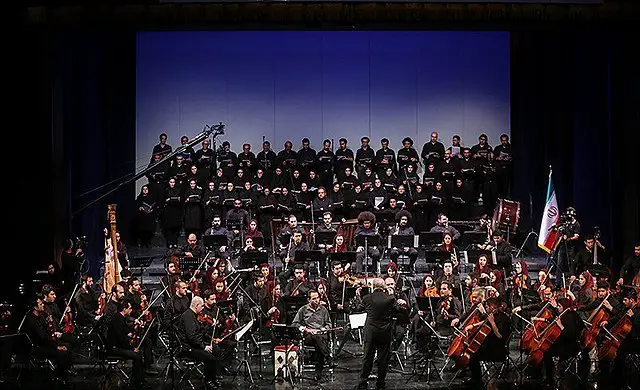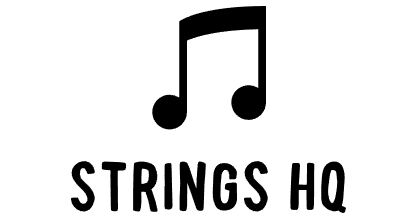Violins were always at the center of any musical assembly, since the early days of baroque music throughout the classical, romantic, and modern times.
These instruments are treated generously in numerous scores, and there are many works that were written to showcase and glorify what violins are capable of.
In this article, we’ll take a closer look at the role of violins in the orchestra. We’ll see whether this status is well deserved or just a musical tradition.
Summary
Violins often carry the melody of the orchestra as their pitch is higher than other string instruments and therefore they stand out. However, Violins do not always carry the solo of the orchestra. Many pieces of work give center stage to other instrumental sections. The Violin section also plays an accompanying role in any type of concerto.
Table of Contents
Why Are There So Many Violins in an Orchestra?
Violins have a sing-song melodic sound. As a matter of fact, it’s quite easy for the human voice to hum along with the mellow tunes of a violin. In addition, strings are quite versatile. And with only four strings, they are capable of performing extremely complicated compositions.
This is the main reason why an orchestra depends on the violin for carrying the main message and basic motifs of a musical piece. There are a few more practical reasons why there are so many violins in an orchestra.
Here are some of them.
- The violins aren’t too loud by nature. Thus, an orchestra needs to add more of them to level up with the brass and woodwind. Otherwise, these instruments could be quite overwhelming.
- Half of the violins (the first violins) carry the main melody, while the other half (the second violins) create harmony and provide a tangible rhythmic accompaniment.
- The woodwind and brass depend on the breath of the player. This limits their ability to play long segments. The violins can go on for any length.
- Violins are capable of creating both melodies and rhythms, which is another limitation on brass and woodwind.
- Plenty of musical compositions, especially those from the Baroque period, were written for violins. The scores usually specify a large number of string instruments, so that became a requirement in orchestras.

How Many Violins Are There in an Orchestra?
Depending on the type of orchestra, there may be up to 32 Violins within the string section.
Typically, an orchestra has a majority of violins that seem to be supported by various other instruments. Even small assemblies carry the same tradition of placing a generous number of violins in their arrangements.
An orchestra usually has four categories of instruments: strings, brass, woodwind, and percussion. Each class often has an assortment of different sizes and timbers of instruments. And that is what gives the orchestra its multi-layered musical experience.
The strings already make up a large amount of these instruments. And within the string category; violins are the most abundant. Generally, there are ten first violins and ten second Violins in a performance.
The number could be much higher in a big orchestra where the first violins could be up to eighteen, and the second violins could be up to sixteen.
The rest of the strings are the violas, the cellos, and the basses. Usually, there would be ten violas, which is a counterbalance for the violins, plus eight cellos, and around six basses. The numbers could increase, naturally, with larger philharmonic orchestras.
How Many First and Second Violins in an Orchestra?
The numbers aren’t written in stone, but generally speaking, a fine orchestra would have ten to eighteen first violins, and ten to sixteen second violins.
This depends on the repertoire that’s expected throughout a musical season, in addition to the financial capabilities of the orchestra.
It’s worth noting that a larger number of violins would provide a richer musical experience. Then again, it would take far more effort to coordinate the performances of the individual players. It also costs a lot more.
Does a Violin Always Have the Solos in an Orchestra?
There’s an abundance of musical pieces that give the violin a center stage with long dedicated solos. That’s probably why there’s an impression that only violinists get to play solo in a concert. However, that’s not true at all.
Many pieces were written for various instruments. Some of them with the accompaniment of violins, and some with a complete focus on another musical source.
For example, Bach’s Cello Suites were clearly written for the sheer enjoyment of the deep tenor tunes of cellos. The soprano melodies of a violin don’t seem to be needed at all in any of these compositions, even as an accompaniment.
Another lovely solo that steers clear from strings is Debussy’s Prélude à l’après-midi d’un faune. It’s a prominent and highly expressive part of the composition. And even as it wraps up, it’s joined by the harp, then, the rest of the woodwind arrangement.
Piano solos are also among the most memorable performances. Arno Babajanyan’s Heroic Ballade for Piano and Orchestra is a beautiful piece that’s absolutely unforgettable. The piano flaunts its presence and charisma with the subtle assistance of a whole orchestra.
There are other solo gems for the clarinet, oboe, guitar, harp, and many other instruments. Composers would never be limited by convention or tradition. These folks would always push the limits whenever they can.
Thus, violins are of paramount importance, but they don’t always get to play the star of the show.
What Is the Purpose of a Violin?
A violin is a versatile instrument with a beautiful melodic sound. It’s quite capable of carrying a tune all alone, and if accompanied by other instruments, it still stands out.
Over the years, musicians have come up with ever more sophisticated techniques to play the violin. Paganini was among the greatest innovators, and his works reached a degree of complexity that made them the ultimate benchmarks for players.
It seems that only violinists of the caliber of David Garrett can pull off that level of difficulty. A nice demonstration is Caprice Nº 24, which goes all the way from calm to absolutely ‘capricious’.
A violin can play all sorts of melodies, as well as a whole assortment of rhythmic sequences. Additionally, it can carry on for any segment length. That’s because it’s not limited by a breath of air the same way a flute or a clarinet is.
On top of all that, it’s a portable instrument, unlike the piano, which is hard to carry around. It’s no wonder that it has a strong presence in various genres of music from classical to jazz. Even the western square dance was played mainly with a violin.
Is a Violin the Most Important Instrument in an Orchestra?
The violin is absolutely important in any orchestra, both in terms of its musical weight and the sheer number of violinists in the company.
However, it’s hard to make a bold declaration that the violin is the most important instrument in the orchestra. The whole philosophy of an assembly of instruments is harmony. This means that a composition can only work when all of the instruments are completely in sync.
Additionally, there are many works that marginalize the violins, or even the whole string section in favor of the woodwind, the brass, or the piano. This fact is further proof that violins could be dispensible, which gives a bit more perspective about the matter.
How are Violins Seated?
In most modern-day orchestras, the violins sit to the left of the conductor, with the next row of players usually consisting of the woodwind. The percussions are next in line, which has to do with the loudness of these instruments as well as how their sound needs to be widely projected.
Traditionally, the first and second violins sat opposite to one another. That was an arrangement that accentuated the ‘conversational’ aspect of the strings. It worked quite nicely up until the Philadelphia Orchestra conductor, Leopold Stokowski, shook things up a bit.
Stokowski didn’t feel that the traditional seating served the various performances well. Thus, he experimented with several arrangements till he reached the current one. Interestingly, orchestras all over the world followed suit, and that became the standard seating.
What’s the Difference Between First and Second Violins in an Orchestra?
The first violins play the main theme of the melody. They carry all the different motifs and express a wide range of variations on the basic theme. The players need to have the ability to articulate various emotional levels.
The second violins role isn’t any less difficult or essential. In fact, these violinists should be well-versed in the hardest techniques to do their job well.
Second violins provide a higher or lower level of the same tone in perfect harmony with the first violins. They can solidify and strengthen the notes, or, they can counter them in a provocative manner.
Additionally, they can play a number of soft rhythmic patterns that give form to the melody of the first violins.
Conclusion
Violins undoubtedly play a hugely important role in the orchestra. Their number and placement clearly reveal this dominance. And so do the numerous scores that focus on the impressive capabilities of violins.
Whether as solo acts, as principal instruments, or as an accompaniment for another instrument, violins are an integral part of any orchestra.
